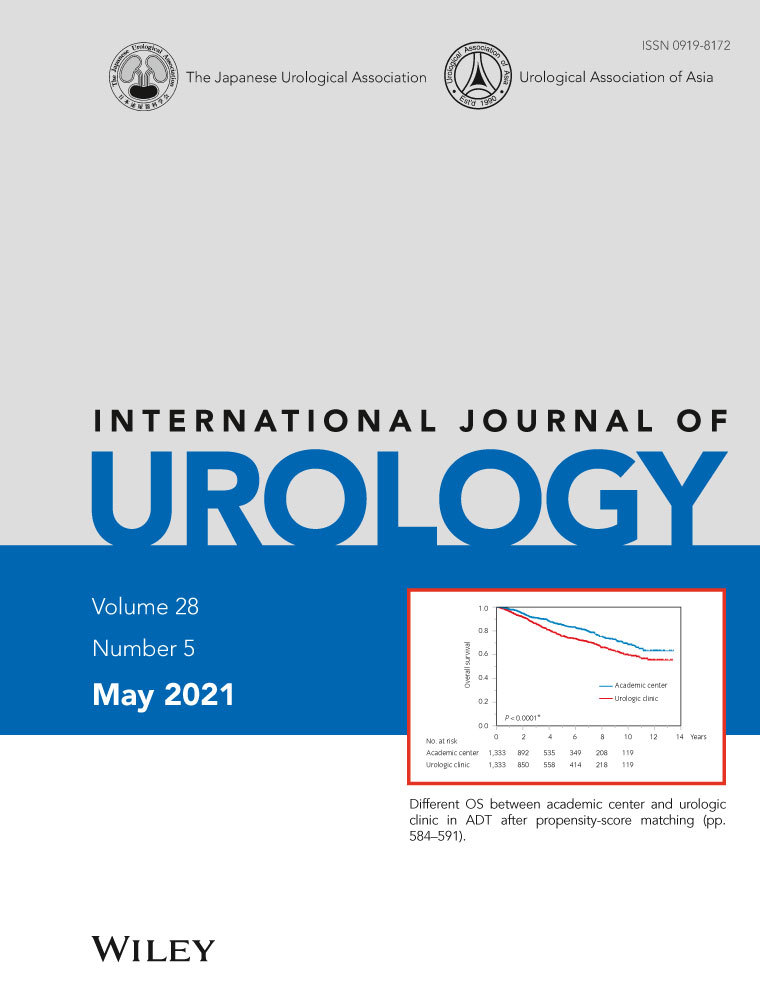IJU this issue
This issue contains one Guideline, two Review Articles, 14 Original Articles and one Urological Note.
Takahashi et al. (Tokyo, Japan) created the abridged English translation version of the second edition of the Japanese Clinical Guidelines for Female Lower Urinary Tract Symptoms, published in September 2019. This English-translated guideline contains two algorithms for “primary treatment” and “specialized treatment.” Among the 26 clinical questions of the Japanese edition, nine were selected in this English version. The grade of recommendation for each therapeutic method is summarized in the tables, which consist of behavioral therapy, therapeutic drugs for overactive bladder and main surgical procedures for stress urinary incontinence. This guideline would be expected to be used by urologists and health professionals.
One of the Review Articles described functional outcomes after robot-assisted radical cystectomy. Although multiple studies have examined the oncologic safety and perioperative outcomes of robot-assisted radical cystectomy, few have investigated functional outcomes. Iqbal et al. (New York, USA) carried out a comprehensive review of the literature using keywords with functional outcomes. In their conclusion, robot-assisted radical cystectomy functional outcomes seem comparable to open radical cystectomy; however, more studies are required. The other review by Yoshida et al. (Tokyo, Japan) summarized the basics of whole-body diffusion-weighted imaging (WB-DWI) and its application in the clinical management of prostate cancer at various stages. WB-DWI is recognized as next-generation imaging or modern imaging for prostate cancer. It is also expected to have a role in the development of a new image-based therapeutic approach for prostate cancer. WB-DWI shows promise in the assessment of the true extent of prostate cancer, and to characterize metastatic lesions in a non-invasive way without contrast materials and radiation exposure. Currently, the consequences of therapy guided by the findings of WB-DWI remain unclear, and further studies are required.
Interstitial cystitis/bladder pain syndrome is a chronic bladder condition characterized by bladder pain, frequency and urgency in the absence of other well-defined pathologies. Yoshimura et al. (Pennsylvania, USA and Kyoto, Japan) carried out a multicenter, randomized, double-blind, placebo-controlled, clinical study to evaluate the efficacy and safety of intravesical instillation of KRP-116D (50% DMSO solution) in interstitial cystitis/bladder pain syndrome patients with the bladder-centric phenotype. This phenotype was identified by cystoscopic examination and bladder pain relief after intravesical lidocaine instillation. They concluded that intravesical instillation of KRP-116D in interstitial cystitis/bladder pain syndrome patients improves both patient-reported outcomes and objective voiding parameters.
Two Original Articles on robot-assisted surgeries are included in this issue. Although the utilization of robot-assisted partial nephrectomy (RAPN) has been rapidly increasing, there are still limited data for the feasibility of RAPN in high-complexity tumors. Koukourikis et al. (Seoul, Korea) carried out this study to evaluate the surgical, long-term functional and oncologic outcomes of RAPN, focusing on patients with high-complexity tumors according to the Preoperative Aspects and Dimensions Used for an Anatomical score system. Overall, 155 patients with a Preoperative Aspects and Dimensions Used for an Anatomical score ≥10 renal mass were included in the study. The Trifecta accomplishment rate was similar between the groups of patients with a Preoperative Aspects and Dimensions Used for an Anatomical score. They showed that high-complexity tumors could be treated effectively with RAPN in terms of long-term functional and oncologic outcomes, when carried out by an experienced surgeon. Low et al. (Singapore) carried out the prospective pilot study to evaluate the feasibility of carrying out robot-assisted laparoscopic radical prostatectomy by the total extraperitoneal approach in an ambulatory with extended recovery setting for low- to intermediate-risk organ-confined prostate cancer. They showed that the short-stay ambulatory with extended recovery approach is safe, feasible and with a high success rate.
Conflict of interest
None declared.





